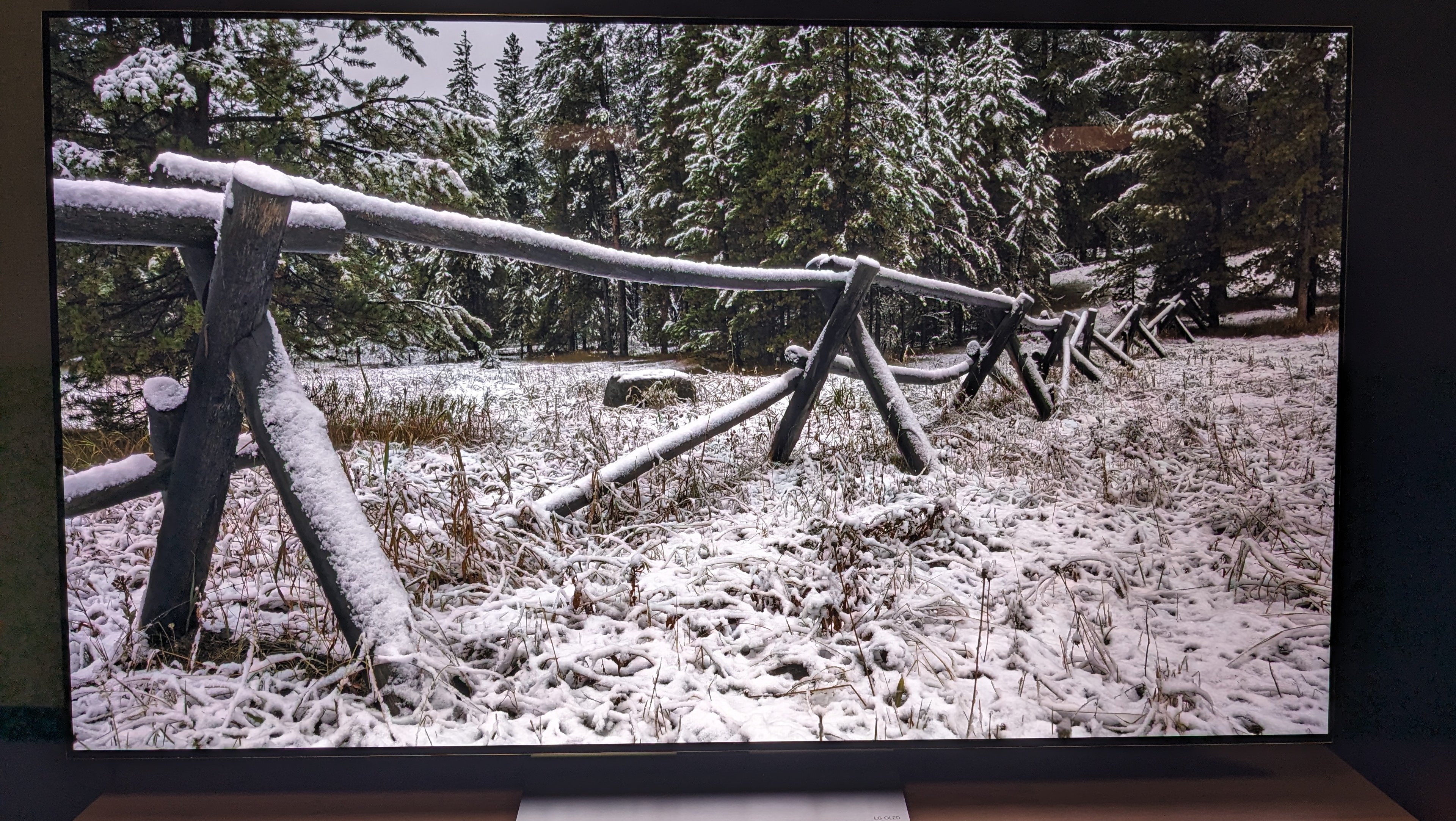
The next step in the evolution of OLED TVs could finally be around the corner. Inkjet-printing (IJP) OLEDs, which promise to be greener, brighter and cheaper, have seemingly entered production and might be on the market within the next couple of years.
OLED TVs are amongst the best TVs available, but what is an IJP OLED? Simply put, it is a method of manufacturing OLED TVs using inkjet-printing technology that could cut production costs compared to expensive current manufacturing methods. In turn, this will hopefully mean cheaper OLED prices for consumers. The panel also promises less energy consumption, resulting in a greener, more cost effective running of OLEDs, and it also suggests much brighter images.
One of the first major brands to really discuss these IJP TVs is TCL, who actually unveiled a couple of IJP OLED prototypes at CES 2023 earlier this year, which we were able to get a look at. The first model in question was a 31-inch 4K IJP OLED TV, smaller than the smallest commercially available 42-inch OLED TV, with a 120Hz refresh rate. The other was a 65-inch, 8K foldable IJP OLED. Yes, a foldable OLED TV with all of the above. This model had a 120Hz refresh rate and a mind boggling 33 million pixel display, meaning it is one of the most technically advanced OLED displays ever made (via TCL).
Although IJP OLEDs have been talked about for a couple of years, at TCL’s Experts Meet Experts conference in Warsaw, Poland in November 2023, we finally received an elusive piece of information - an arrival date for these IJP OLEDs. Although the date itself was still not concrete, TCL announced that one line in its Guangzhou production facility is investing in IJP OLEDs and suggested we could see IJP OLEDs on the market in 2024/2025.

The current state of OLED
There have been several advances in OLED TVs in recent years from the standard W-OLED panels that are available in some of the best OLED TVs from brands such as LG, Sony and more. These include OLED EX panels, found in TVs like the LG C3, that raise the brightness levels of standard OLED TVs to between 800 and 1,000 nits.
Another advance, introduced in 2022 by Samsung, is QD-OLED, which combines an OLED panel with Quantum Dot technology to further raise brightness levels. This can be found in TVs such as the Samsung S90C, which won TV of the Year at the TechRadar Choice Awards 2023 and its more premium counterpart, the Samsung S95C, both of which hit peak brightness levels of 1,100-1,400 nits. Lastly, there are OLEDs such as the LG G3 and Panasonic MZ2000 that integrate micro-lens-array (MLA) tech to bring even greater brightness, hitting peak levels up to 1,500 nits.
But why all this talk of brightness? One of the downsides of W-OLED TVs, those without any of the above ‘enhancements’, is their dimmer displays. Although these W-OLED TVs still have excellent black levels and contrast and punchy color, brightness is comparatively lacking, causing them to struggle in brighter viewing environments. The above enhancements do help in this regard, but they also result in more expensive sets.

IJP - the future we need?
This is where IJP OLEDs come in. If IJP manufacturing can cut production costs, it will mean lower prices and, with the more capable displays, brighter images. That eliminates two of the problems facing current OLED technology.
During TCL’s event in Warsaw, several statistics were presented in regards to IJP OLEDs vs other OLEDs. QD-OLED is the highlight tech of the pack at the moment, with 1,500 nits peak brightness, an average 250 nits brightness (across the whole screen and not just peak), and Rec.2020 (color space average) coverage of 85%. TCL believes that RGB IJP OLED TVs will hit a peak of 2,000 nits, 300 nits average brightness, and Rec.2020 color space coverage of 90%.
If these results predicted by TCL are to be believed, then we could be seeing the dream OLED TV - with deep blacks, vibrant color, brightness to rival even some mini-LED TVs such as the Samsung QN90C, and all at cheaper prices.
Final thoughts
These statistics by no means are concrete - we’ve heard about IJP OLED TVs before, with some experts predicting years ago that we’d see IJP OLED TVs by 2023. Well, 2023 is almost over and we’ve not seen commercially available IJP OLEDs yet.
But with these figures starting to appear following a physical model demonstrated by TCL at CES 2023, something is clearly stirring. OLED TVs continue to be extremely popular, and if IJP can push progress in the ways we’ve been told, then it will be exciting to see what the next couple of years will bring.







